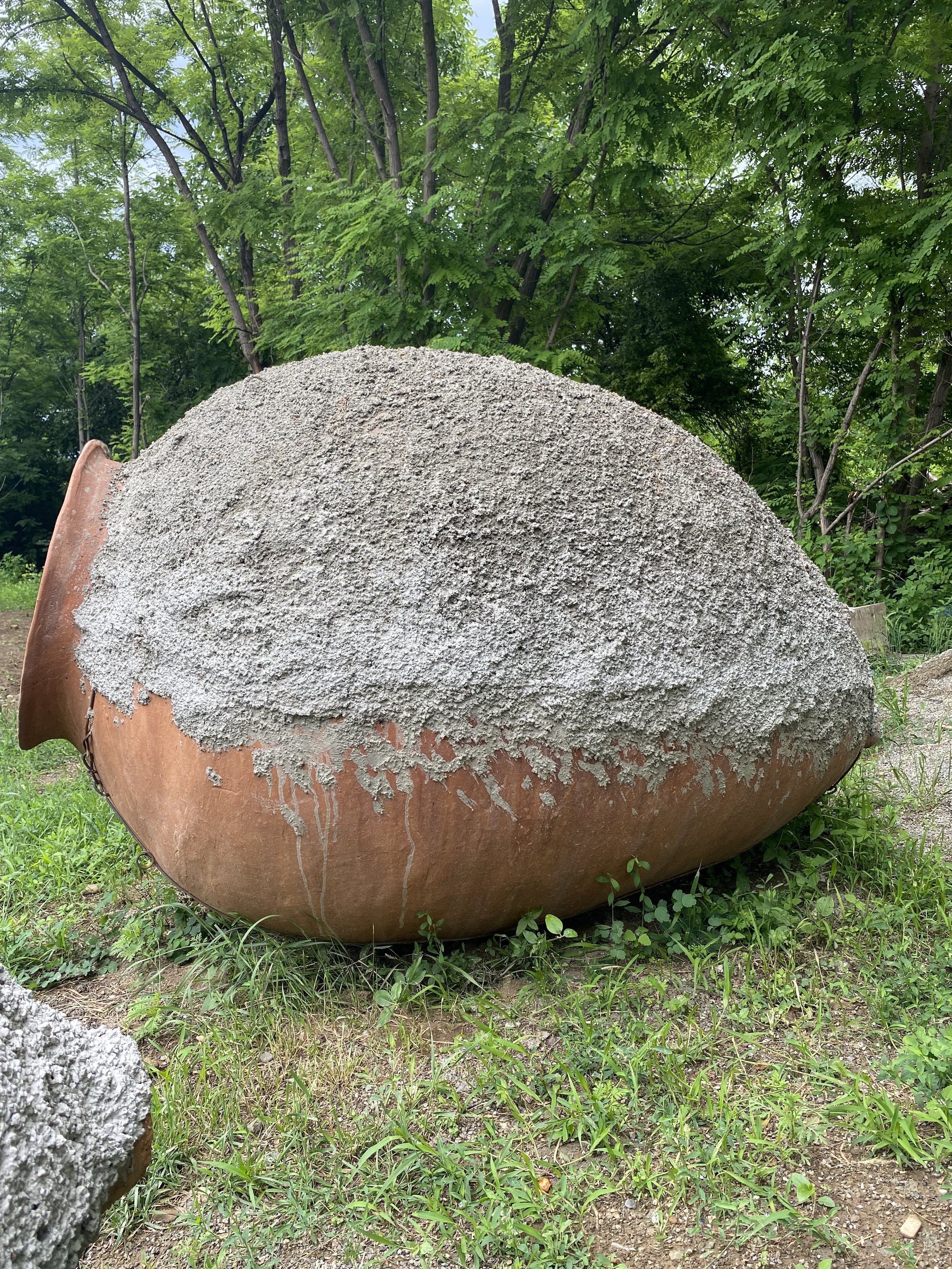How to Serve Qvevri Wine
If you’ve heard of qvevri wine, you probably think of those amber-hued, funky, skin-contact wines. True - qvevri-fermented wines made of white grapes on skins are amber or orange, but if no skins have participated in the fermentation process, the wine is actually white! And what if red grapes are fermented in qvevri?
Let’s talk about all this in detail and find out how to serve qvevri wines properly so that you can make the most out of a bottle and make your guests happy.
Amber Qvevri Wine
Let’s start with the amber wines. These wines are fermented with their skins, which give them their distinctive colour and a whole lot of character. They are tannic, textured, and ready to take your taste buds on a wild ride.
Amber qvevri wines can have everything from deep fruit flavours to earthy, herbal notes and even some tea-like tannins. They’re complex, full-bodied, and absolutely perfect for a variety of foods.
How to Serve Amber Qvevri Wine
You don’t want to chill these wines too much. Serve them at a slightly cooler temperature than red wines — around 12°C to 14°C. This will let those complex aromas open up while balancing out the tannic structure. Amber wines are also best enjoyed in wide-bowled glasses that give them room to breathe.
These wines love a bit of air and time to show off their best. They’re also fantastic food companions, especially with richer dishes. Think hearty roasts, stews, and even strong cheeses — they’ll be right at home on your table.
Give it a taste:
White Qvevri Wine
Now, let’s talk about white qvevri wines. Despite being made in the same traditional clay vessels, these wines aren’t fermented with skins, or an insignificant amount is added during the initial stage of fermentation in order to achieve more complexity and texture.
They are usually fresh, crisp, and lively, like a white wine should be.
How to Serve White Qvevri Wine
When serving white qvevri wines, the key is to keep them chilled — but not ice-cold. Aim for around 8°C to 10°C to preserve their freshness and bright character. A classic white wine glass works best here, as it lets the crispness and delicate aromas shine.
These wines are perfect for lighter meals like seafood, grilled vegetables, or fresh salads.
Give it a taste:
Red Qvevri Wine
Usually made from red grape varieties like Saperavi, these wines tend to have deep colour, bold flavours, and a full-bodied character. The tannins are usually bolder than those of barrel-aged reds. The flavours vary depending on variety, of course, and a clean qvevri usually doesn’t impart any earthiness or rustic flavours to the wine!
How to Serve Red Qvevri Wine
Red qvevri wines with a lot of tannins (e.g., Saperavi, Aleksandrouli, Otskhanuri Sapere) should be served as typical bold reds. The ideal temperature is between 16°C to 18°C, which helps the wine express its complexity without feeling too heavy. Serve them in a large, round wine glass to allow their aromas to open up.
Delicate varieties, such as Shavkapito, Dzelshavi, Aladasturi, are fine in the 13°C to 16°C range (think Gamay).
Red qvevri wines pair well with grilled meats, stews, and dishes with earthy flavours, like mushrooms or game.
Give it a taste:

